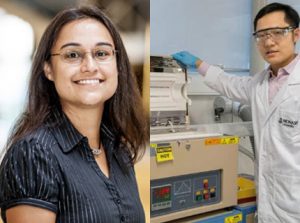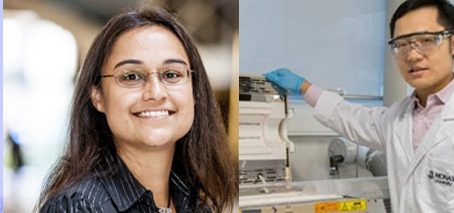From Monash University Insider (staff only)
While a smartphone or home PC itself doesn’t burn too much energy, a tremendous amount of electricity is consumed in the massive data centres (or ‘server farms’) that keep us all connected via the net.
A new, ARC-funded research centre aims to address the growing computing energy challenge using materials that are just one atom in thickness.
In conventional silicon-based electronics, energy is burnt each time a transistor ‘switches’. It’s a tiny amount per ‘switch’, but with billions of switches per chip switching billions of times per second, that energy adds up. In fact, computing now consumes 5% of global electricity, and doubling every decade.
At a personal level, it means that each smartphone is now responsible for burning more electricity than a household fridge.
With the vast bulk of that energy being consumed in huge, distant data centres, the issue has been invisible to most consumers.
And while the likes of electric cars and insulated homes become ever more energy-efficient, we are reaching a crunch point in efficiency of computers, and our insatiable appetite for computing continues to grow exponentially.

FLEET researchers Meera Parish (School of Physics and Astronomy) and Qiaoliang Bao (Department of Materials Science & Engineering)
If computing is to keep growing, without being limited by energy use, we need more efficient electronics.
And that’s where FLEET comes in – a new, Australian Research Council funded research centre headquartered at Monash University.
FLEET (the ARC Centre of Excellence in Future Low-Energy Electronics Technologies) is using atomically-thin, two dimensional (2D) materials as the basis of a new generation of ultra-low energy electronics.
In traditional, silicon-based electronics, energy is dissipated as electrons scatter off impurities and the semiconductor lattice within transistors. FLEET will use two relatively new scientific ideas to create transistors with no scattering, and thus zero, or near-zero wasted dissipation of energy.
Topological insulators, recognised by last year’s Nobel Prize in Physics, are electronically insulating through their centres, but can carry electrical currents on their boundaries. FLEET is developing atomically thin (two-dimensional) topological insulators in which electrons flow along one-dimensional edges without scattering or losing energy.
Excitons are bound pairs of electrons and ‘holes’ (the positively charged absence of an electron) in a semiconductor. FLEET is studying excitons and exciton-polaritons (excitons that are strongly coupled to light) in atomically thin semiconductors, where they can condense into a superfluid state and flow without resistance.
FLEET connects researchers from Science (the School of Physics and Astronomy) and Engineering (Department of Materials Science and Engineering) with colleagues in six other universities and 13 other Australian and international science centres, including ANSTO and the Australian Synchrotron.
The Centre is led by Prof Michael Fuhrer, whose previous work as head of the Monash Centre for Atomically Thin Materials was key to FLEET receiving funding in last year’s ARC Linkage round.
FLEET will develop new ultra-low energy electronics that will allow computing to continue to grow. The Centre will put Australia at the forefront of the new technology, and train a workforce for future industry.
You can follow FLEET news via FLEET.ORG.AU, Twitter and Facebook, or via FLEET communication coordinator, Errol Hunt.

